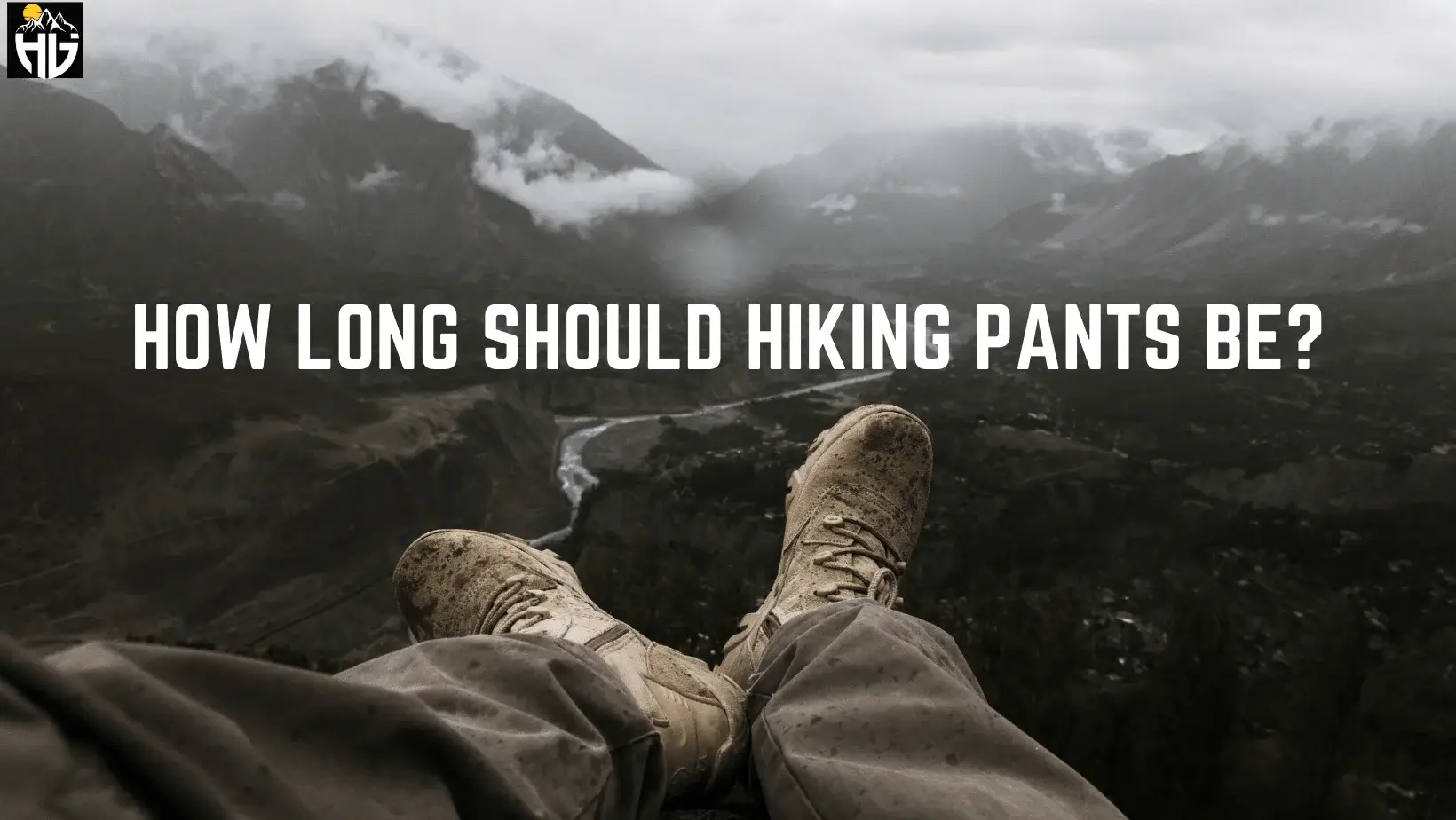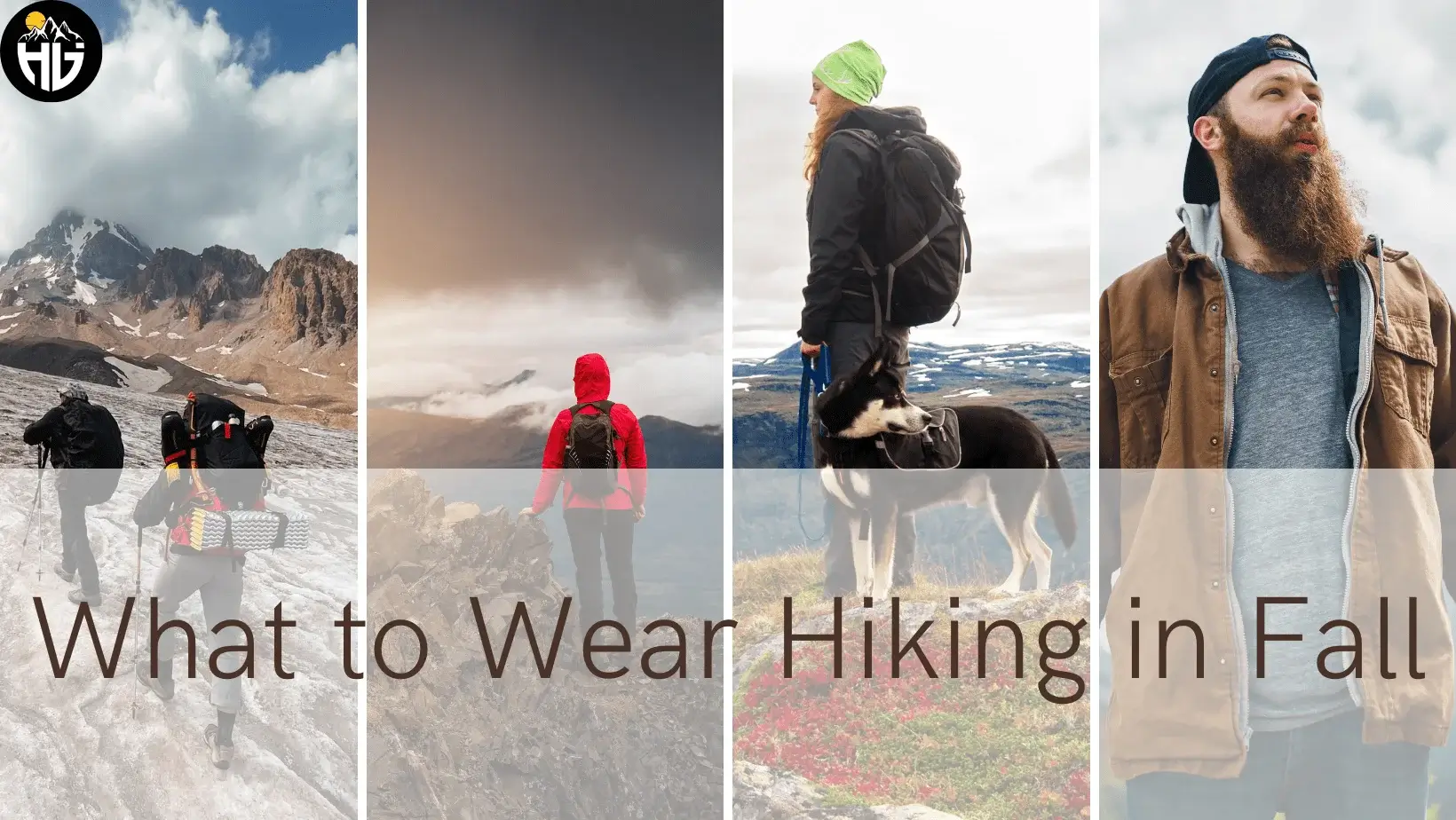What to Wear Hiking in 60 Degree Weather
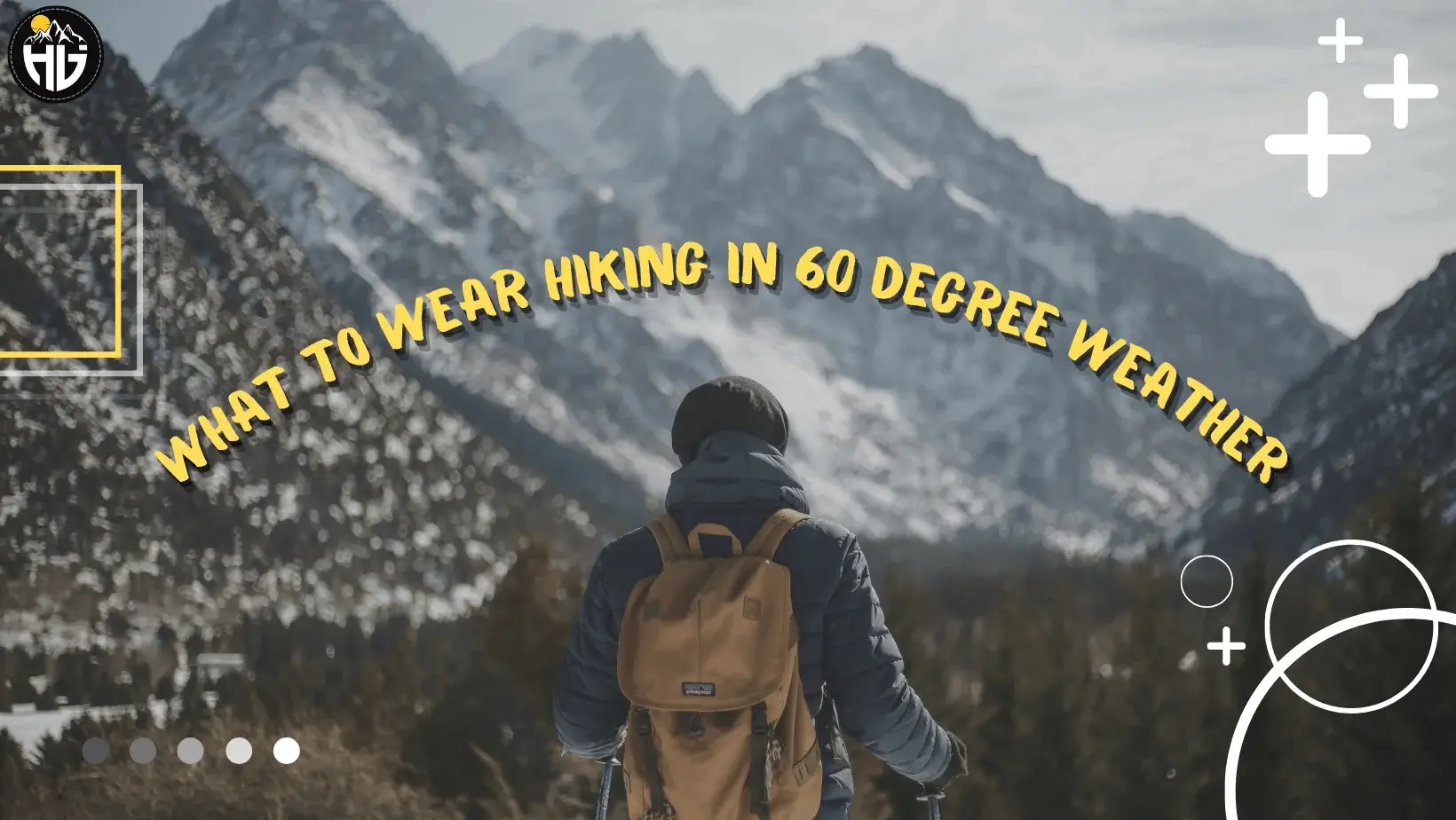
Are you going on a hike when it’s only 60 degrees outside? The proper gear is crucial for your comfort and safety on the trail. Knowing what to wear hiking in 60 degree weather, you can make all the difference in your hike, whether you’re a novice or an experienced hiker. This article will discuss the best clothing choices and hiking equipment to use, and offer advice on how to dress appropriately.
Even though it may seem like mild weather, there can still be problems like wind and rain, especially at higher altitudes. Layering system can help you control your body temperature, and the right equipment can protect you from the elements. You can guarantee a relaxing and enjoyable hiking experience by knowing what to wear and when.
Anyone planning a hike in 60-degree weather, from novice to seasoned hikers, should read this article. It will offer helpful advice on what to dress and what equipment you need for a successful and safe trek. The suggestions in this article will help you prepare for the conditions and enjoy your time on the trail, whether hiking for a few hours or setting off on a multi-day adventure. Now that we know what to wear hiking in 60-degree weather let’s start!
Factors to Consider

Altitude, humidity, and wind should all be considered when deciding to wear something in a 60-degree weather hiking. These elements may affect the temperature and the hiking attire you should wear.
Temperature
The temperature on a hike is significantly influenced by altitude. The air pressure drops as the altitude rises, resulting in a drop in temperature. Therefore, if you’re planning a hike at a higher altitude, it’s crucial to dress in layers and bring appropriate gear, such as a warm jacket, gloves, and a hat.
Humidity
Low humidity can make it feel cooler, while high humidity can make it feel warmer than it is. Wear clothing that has moisture wicking properties if you’re hiking in a humid environment to stay dry and comfortable.
Wind
Even though it’s only 40 degrees outside, a strong wind can make it feel much colder. Wearing wind-resistant clothing, like a windbreaker or shell jacket, can help keep you warm and shield you from the elements.
What to Wear Hiking in 60 Degree Weather?

Choosing the appropriate clothing is crucial for hiking in 60-degrees to stay cozy and secure on the trail. The best clothing choices for hiking in these conditions are listed below:
Moisture wicking base layer should be your first layer of clothing.
These clothes will keep you dry and comfortable throughout your hike by drawing sweat away from your skin. Various top-notch base layer options are available from companies like Under Armour, Smartwool, and Icebreaker.
Lightweight hiking pants or shorts
You can choose lightweight hiking pants or shorts based on your preferences. These clothing items are made to keep you warm and dry while allowing your skin to breathe. Look for strong, quick-drying materials like nylon or polyester. Companies like Columbia, The North Face, and REI offer various high-quality hiking pants and shorts.
Insulating mid-layer
For cooler days, it’s important to have an insulating mid-layer to help regulate your body temperature and keep you warm. Popular options are lightweight jackets and compressible fleece and puffy jackets. Various top-notch insulating mid-layer is available from Patagonia, Arc’teryx, and Mountain Hardwear.
Windproof and waterproof outer layer
The outer layer of your hiking clothing should protect you from the elements. Popular materials that offer excellent protection against wind and rain include Gore-Tex. There is a wide selection of top-notch windproof and waterproof jackets from companies like Marmot, Outdoor Research, and Black Diamond.
Comfortable Hiking Boots or Hiking Sandals
Last but not least, having comfortable and supportive hiking boots or hiking sandals are crucial for avoiding blisters and other trail-related injuries. Look for footwear that fits comfortably and has good traction on various surfaces. Companies like Salomon, Merrell, and Keen offer various supportive and long-lasting hiking footwear options.
In conclusion, when hiking in 60-degrees, it is crucial to wear moisture-wicking base layers, light hiking pants or hiking shorts, insulating mid-layers, windproof and water resistant outer layer, and cozy trail running shoes. You can stay protected and comfortable on the trail by wearing high-quality outdoor clothing from reliable brands.
What To Pack For Hiking In Utah?
Additional Gear to Consider
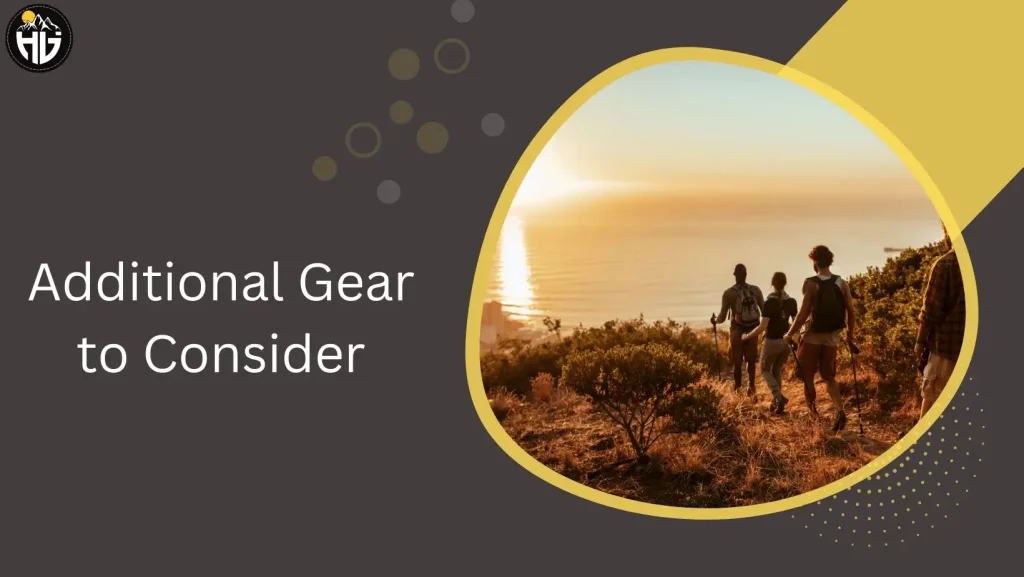
In addition to your clothing, there are other factors to consider when hiking in 60-degree weather. Consider the following additional gear before hitting the trail:
Sun protection

The sun can still be strong and damaging to your skin, even on cooler days. Apply sunscreen to any exposed skin, and protect your face and eyes by donning a hat and sunglasses. Columbia, Sunday Afternoons, and Outdoor Research offer various high-quality sun protection products.
Backpack
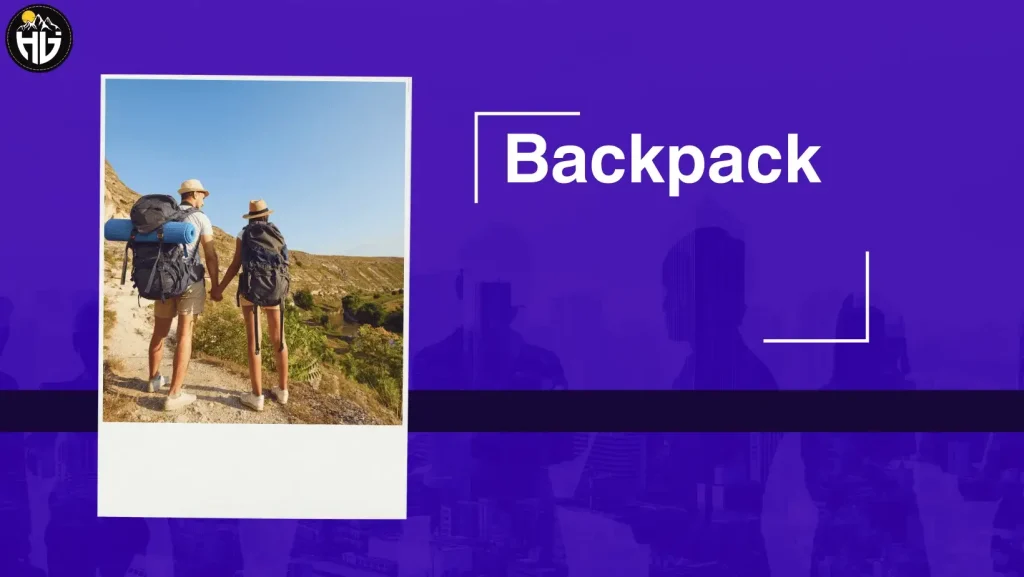
A backpack must carry all your supplies and equipment on the trail. Choose a pack that fits comfortably and has space for your clothing, food, water, and any additional equipment you may require. Various top-notch backpacks for hiking are available from companies like Osprey, Gregory, and Deuter.
Trekking poles

While hiking, trekking poles can help you keep your balance and lessen the strain on your joints. They come in particularly handy when hiking on rocky or uneven terrain. Search for adjustable, lightweight poles. Many high-quality trekking pole manufacturers are available, including Black Diamond, Leki, and REI Co-op.
Gloves or mittens

It’s essential to wear a pair of gloves or mittens on a 60 degree hiking, and even in fall weather. They can aid in shielding your hands from the sun, wind, and chilly conditions. Look for mittens or gloves that are breathable and light in weight. Several high-quality brands sell gloves and mittens, including Outdoor Research, Black Diamond, and Smartwool.
Headlamp or flashlight

If you plan on hiking later in the day or overnight, a headlamp or flashlight is essential for seeing where you’re going. Look for a portable, strong option that has adjustable brightness. Top-notch headlamps and flashlights are available from Petzl, Black Diamond, and Princeton Tec.
In conclusion, when hiking in 60-degree weather, it’s important to consider the following gear: headlamps or flashlights, backpacks, trekking poles, gloves or mittens, and sun protection gear. You can ensure you stay secure and at ease on the trail by selecting high-quality equipment from reliable manufacturers.
Tips for Dressing Appropriately

There are a few important considerations to keep in mind when choosing the proper hiking clothes for hiking in 60-degree weather:
Layer your clothing
Layering systems are essential for maintaining comfort and controlling your body temperature. Start with a base layer that is made for wicking sweat and to keep you dry, add an insulating layer for warmth, and finish with a windproof and waterproof outer shell to keep the elements off you. You can then quickly alter your clothing as necessary throughout the hike.
Avoid cotton clothing
Wearing cotton can make you feel cold and uncomfortable because it absorbs and holds onto moisture. Instead, choose moisture wicking synthetic materials or merino wool base layers that wick moisture away. Even if you start to sweat, these materials will help keep you dry and comfortable.
Check the weather forecast before heading out
This will enable you to appropriately prepare your clothing and equipment and prevent surprises, such as unforeseen rain or wind.
Consider the hike’s length and difficulty
The hike’s length and difficulty may influence your hiking clothes. You might be able to get away with wearing lighter clothing if you’re going on a shorter and easier hike. Pack an extra layer and equipment for a longer or more difficult hike to stay safe and comfortable.
Implementing these suggestions can improve your hiking experience and guarantee your comfort and safety while on the trail. You can make wise clothing decisions and enjoy your hike to the fullest by dressing in layers, avoiding cotton, checking the summer weather forecast, and taking into account the length and difficulty of the hike.
Weather-specific safety gear
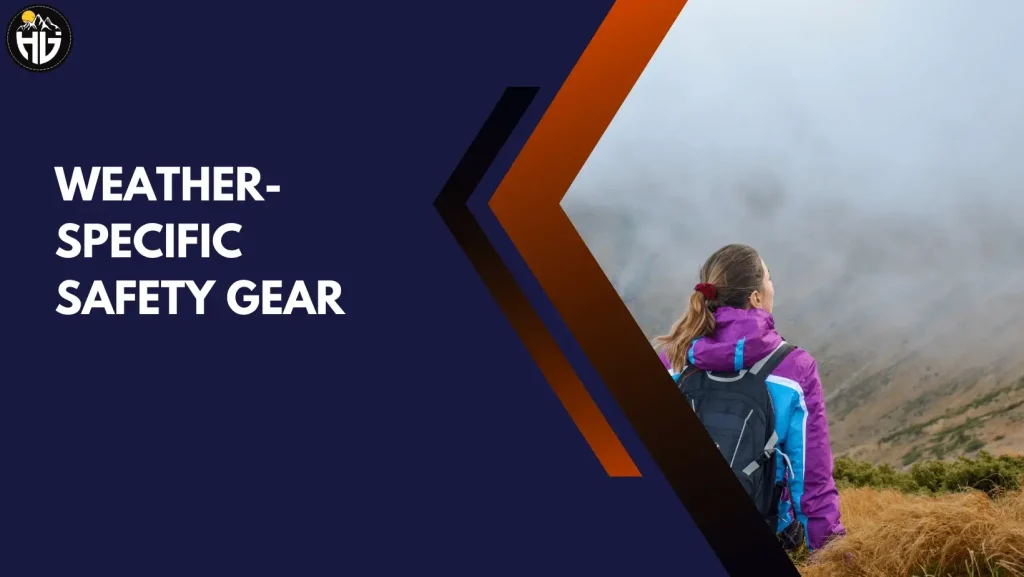
Safety equipment is necessary for a successful and enjoyable hiking trip. Hikers are protected from potential weather hazards and unforeseen circumstances by safety equipment. Wear weather-specific safety gear when hiking in 60-degree.
Sun protection
It is necessary on all hikes, but it’s especially important in temperatures below 60 degrees. To avoid skin damage and sunburn, UV protection is crucial. Sunscreen, sunglasses, and a hat are advised accessories. Sunglasses shield the eyes from the sun, while a hat shields the face and head. Sunscreen is crucial for shielding the skin from damaging UV rays.
Rain gear
When hiking in 60-degrees, rain gear is also essential. Hypothermia, which can happen when wet conditions and cold temperatures combine, can be prevented by staying dry. An umbrella, trail running shoes, rain jacket, and rain pants are all advised clothing items. Hikers can stay dry and warm by wearing a raincoat and waterproof pants, and their feet can stay dry and cozy by wearing waterproof hiking boots.
Cooler weather gear
It is essential because unexpected temperature drops can occur. A safe and enjoyable hiking experience depends on staying warm and avoiding hypothermia.
Warm gloves, a warm hat, and insulation layers are recommended. Gloves shield hands from the wind and colder weather, while a warm hat shields the head and ears from the elements. Hikers can enjoy their hike without feeling uncomfortable thanks to insulating layers that keep the body warm and cozy.
In conclusion, weather-specific safety equipment is necessary for a safe and enjoyable hiking experience. Consider important items like sun protection, rain jacket, and cold weather clothing. Hikers can complete a hike while staying safe by purchasing the right equipment.
General Safety Gear
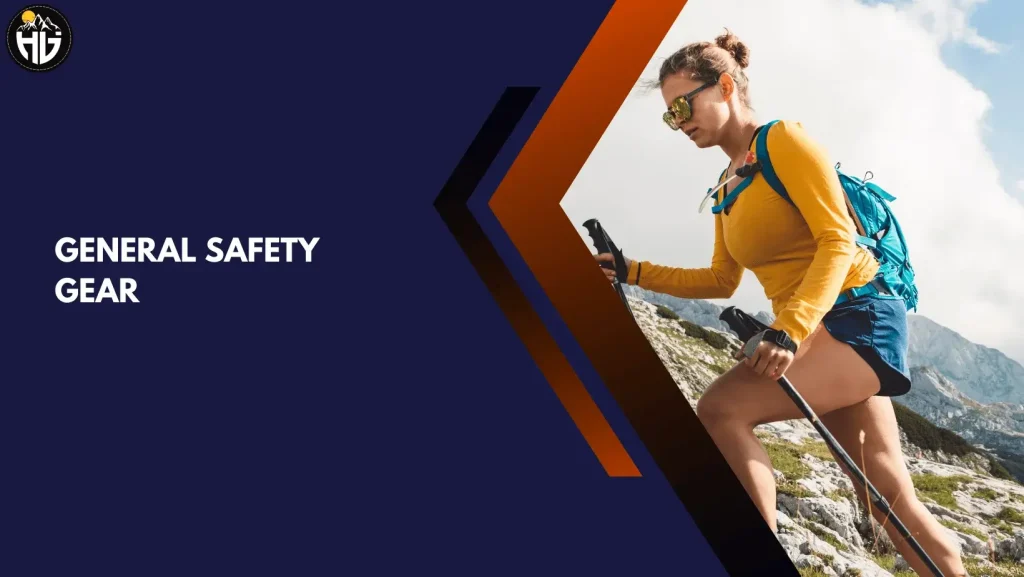
If you enjoy hiking, camping, or exploring outdoors, you know the value of having the proper equipment to keep you safe and protected. Having the appropriate general safety equipment on hand is one of the most crucial things you can do to ensure your safety. We’ll discuss three items you should always have in your backpack in this article: navigational aids, a first aid kit, and lighting equipment.
Navigation Tools: Get Your Bearings Right
Navigational aids are crucial for helping you stay on course and return home if you get lost. A map, compass, or GPS device will help you stay on track and out of trouble, whether hiking in the mountains or exploring a new city. Get a detailed, current map of the area you intend to explore and store it in a water resistant case to keep it safe from the elements.
Another crucial tool for navigation is a compass. You can use it to find your way and navigate through uncharted territory. Before you set out, purchase a high-quality compass and become familiar with its use.
A GPS device might be your best option if you prefer cutting-edge solutions. A GPS device will track your movements, give you real-time location information, and provide useful information about your surroundings. Just remember to bring extras because batteries tend to run out quickly.
First Aid Kit: Be Prepared for Emergencies
Accidents can occur no matter your experience, so it’s critical to be ready for emergencies. Your ability to treat minor injuries and stop them from getting worse is aided by having a well-stocked first aid kit.
Basic first aid supplies like bandages, gauze, adhesive tape, antiseptic wipes, and painkillers should be included. Consider including items like a tourniquet, a splint, or a snake bite kit if you’re going on a longer trip or exploring more difficult terrain.
Before every trip, check your first aid kit to ensure everything is current and in good shape. Additionally, ensure you are familiar with how to use each item in your kit before you need it.
Illumination: See in Low-Light Situations
You’ll frequently encounter low-light conditions while outdoors exploring. The right lighting equipment can make a difference whether you’re setting up camp after sundown or hiking early in the morning.
A versatile and necessary piece of lighting equipment is a headlamp. Your hands are freed up, allowing you to pitch a tent or prepare dinner in the dark. Look for a headlamp with long battery life and adjustable brightness.
Another excellent choice is a flashlight, particularly if you require a stronger light source. Bring extra batteries or a battery pack that can be recharged.
Appropriate general safety equipment can distinguish between a successful and risky adventure. A first aid kit, illumination equipment, and navigational aids are all necessary items that you should always have in your backpack. Before you go out, ensure you have high-quality equipment and know how to use it. And always put your safety first and be ready for emergencies.
Other Safety Considerations
There are additional significant safety considerations to keep in mind when exploring the outdoors, in addition to the necessary general safety equipment mentioned above. These include hiking with a friend or group, being familiar with the trail, and adhering to local laws.
Hiking with a Partner or Group: Safety in Numbers
You can improve your outdoor experience and stay safe by hiking with a friend or group. It not only offers backup assistance in an emergency, but it also enables the sharing of knowledge and expertise.
Having extra safety gear is crucial when hiking with a friend or group. The group should have a whistle, extra clothing, and an emergency blanket on each member. In the event of unforeseen weather changes or injuries, these items can assist you stay warm.
Knowing the Trail and Local Regulations: Be Prepared and Compliant
For your safety and the preservation of the environment, it is essential to be aware of the trail and local laws. Research the trail in advance to discover any potential dangers, such as dangerous wildlife, rocky terrain, or steep inclines. You can better prepare yourself physically and mentally if you are aware of the trail’s degree of difficulty.
Additionally, familiarize yourself with any necessary permits and local laws. Some trails might prohibit camping or fires, while others might demand entrance permits. Knowing these guidelines will help you comply with them and stay out of trouble legally and with the law.
Safety must always come first when engaging in outdoor pursuits. Hiking with a friend or group, being familiar with the trail, and adhering to local laws are important safety considerations to keep in mind, in addition to having basic general safety equipment like navigational aids, a first aid kit, and illumination equipment. You can have a safe and enjoyable outdoor experience by being ready and knowledgeable.
Frequently Asked Questions
What Kind of Jacket Should I Wear in 60 Degree Weather Hiking?
If the temperature is around 60 degrees, and you’re hiking on a sunny day, you may want to consider wearing a lightweight, breathable rain jacket or a long-sleeve shirt that provides sun protection. This will help protect your skin from harmful UV rays and prevent sunburn.
On the other hand, if the weather is cooler or there is a chance of rain, you may want to consider wearing a lightweight, waterproof jacket. Look for a jacket that is made from breathable materials to help prevent the increase in body heat and moisture buildup.
In general, it’s a good idea to dress in layers when hiking, especially if the temperature and weather conditions can change throughout the day. This will allow you to easily adjust your clothing to stay comfortable and protected during your hike.
Should I Wear Leggings During a 60 Degree Hiking?
Leggings can be a comfortable and practical choice for hiking, especially if they are made from moisture wicking materials that can help keep you dry and prevent chafing. They can also provide some warmth and protection for your legs.
However, if the weather is particularly warm or if your body heat increases easily, leggings may not be the best option. In this case, you may prefer to wear shorts or lightweight hiking pants instead.
It’s also important to consider the terrain and any potential hazards on the trail. If you are hiking through areas with tall grass or rocky terrain, for example, you may want to wear long pants and hiking boots to protect your legs from scratches or insect bites.
Ultimately, the best choice of clothing for hiking in 60-degree weather will depend on your personal comfort and the specific weather conditions of your hike. It’s always a good idea to check the weather forecast and dress in layers, so you can easily adjust your clothing as needed.
How Does 60 Degree Weather Feel Like in a Hiking World?
In the hiking world, 60-degrees can feel comfortable and pleasant for many hikers. However, it’s important to keep in mind that the actual feel of the temperature can vary depending on various factors, such as humidity, wind, and sun exposure.
In general, hiking in 60-degrees can feel cool or mild, depending on your activity level and the time of day. If you are hiking in the morning or evening when temperatures are typically cooler, you may feel more comfortable wearing a light jacket or long-sleeve shirt. On the other hand, if you are hiking during the middle of the day when temperatures are warmer, you may feel more comfortable in lighter clothing, such as shorts or a short-sleeve shirt.
It’s important to remember that everyone’s perception of temperature can be different based on factors such as age, gender, and activity level. Some hikers may find 60-degrees to be a cooler weather, while others may find it to be just right. As always, it’s a good idea to check the weather forecast and dress in layers, so you can easily adjust your clothing as needed to stay comfortable during your hike.
Conclusion
When planning a hiking trip in 60 degree weather, it’s important wear comfortable clothes and to consider various factors that can affect your clothing choices. To stay comfortable and safe on the trail, we recommend wearing moisture-wicking base layers, lightweight hiking pants or shorts, insulating mid-layers, windproof and waterproof outer layer, and comfortable hiking boots.
It’s also crucial to bring along additional gear such as sun protection, a backpack, trekking poles, gloves or mittens, and a headlamp or flashlight. Lastly, general safety gear such as navigation tools, a first aid kit, and illumination are essential for any hiking adventure.
By following our tips, you’ll not only stay comfortable and safe but also enhance your hiking experience. We encourage you to use the information provided to make informed decisions about what to wear on your next hiking adventure. Remember, always check the weather forecast, dress in layers, and avoid cotton clothing. Stay safe and enjoy the great outdoors!


